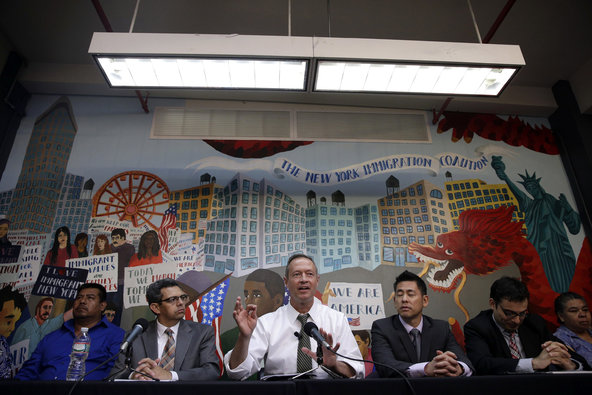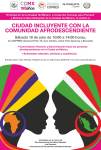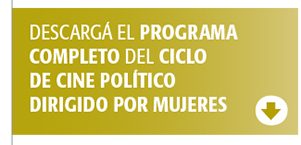
CUNY Exhibition Documents Lives of Black Africans in Early Dominican Republic
By SANDRA E. GARCIA – JULY 13, 2015
Scholars at the City University of New York are using clues left in 16th-century manuscripts and Spanish records to track the lives of the earliest black Africans in the Dominican Republic.
An exhibition now on view of letters and other documents from the archives of CUNY’s Dominican Studies Institute and the General Archives of the Indies in Seville, Spain, provides a window onto the lives of the often ignored black Africans of La Española, the island of Hispaniola.
In the exhibition, “16th-Century La Española: Glimpses of the First Blacks in the Early Colonial Americas,” 25 panels display photos of an original letter or record, along with an English translation, that explain or question situations involving formerly enslaved Africans on the island.
When searching the archives, Anthony Stevens-Acevedo, the assistant director of the Dominican Studies Institute, focused on keywords like “mulatto,” “negro” and “negra,” he said.
In a letter from the Seville archives, an archbishop in Santo Domingo responded to a letter he had received from King Carlos II of Spain. The archbishop described a hut or shack where a black woman “took in the sick people and attempted to heal them or cure them,” Mr. Stevens-Acevedo said.
The woman was described as pious and poor, and the archbishop wrote that before she opened her hut there were no hospitals in Santo Domingo. Later, where her hut had stood, the San Nicolas of Bari Hospital was erected. The hospital, a two-story structure, was impressive at the time, Mr. Stevens-Acevedo said.
Another artifact, a page from a judiciary record filed by a prosecutor in 1694, documents colonists who were selling commodities smuggled into what is now the Dominican Republic.
One of those “commodities” was a black man, Sebastian, described as “Ladino,” which meant he was “knowledgeable of the Spanish culture,” Mr. Stevens-Acevedo said. He had been working as a sailor on a Portuguese ship that was seized by pirates, and he was considered property.
Sebastian testified that he should not be enslaved, that he was a free man in Africa. He claimed to be the son of a king in Guinea.
Other accounts are requests from people who described themselves as having black skin for licenses to travel from Spain to the Dominican Republic “to attend to their parents and their hacienda,” said Lissette Acosta Corniel, a postdoctoral fellow who worked on the exhibition. Some of the requests were approved, and many freed black Africans were allowed to return to Hispaniola.
Ms. Corniel said she hoped the exhibition “nurtures the consideration that above all Dominicans have a common history of blackness.”
That theme has been underlined recently by the controversy over a 2014 immigration law in the Dominican Republic that has left many Dominicans of Haitian descent in limbo and stateless.
“Both nations share a common history for liberation and struggle for social justice,” Ms. Corniel said. “The realization of this is going to take generations to come.”
A version of this article appears in print on July 14, 2015, on page A18 of the New York edition with the headline: Telling Stories of First Blacks to Live in Dominican Republic
Martin O’Malley Pledges to Go Further Than Rivals on Overhauling Immigration
Martin O’Malley, center, hosted a round-table discussion on immigration Tuesday in New York.Credit Andrew Gombert/European Pressphoto Agency
Surrounded by immigrants from several countries, Martin O’Malley, the Democratic presidential hopeful, pledged on Tuesday to go further on overhauling the immigration system than any other candidate, in a clear effort to present a contrast with Hillary Rodham Clinton.
Mr. O’Malley, speaking at an event at the New York State Immigrant Action Fund in New York, ticked off several proposals that he would carry out as president, vowing to close detention centers where those on the verge of being deported are often held and saying that the nation’s enduring symbol should not be a “barbed-wire fence.”
Calling the current immigration system “inhumane,” he also characterized overhauling immigration as a basic economic issue, suggesting it could help the nation get back on a solid footing on jobs and wage growth.
For Mr. O’Malley, the former governor of Maryland, the issue of immigration is a familiar one. He has spoken repeatedly about his support for allowing illegal immigrants to get driver’s licenses, an issue that tripped up Mrs. Clinton, then a senator from New York, in a Democratic presidential primary debate in 2007.
But he also clashed with the White House in 2014 amid a surge of migrants, many of them children, illegally coming into the United States from Central America to escape violence at home. Mr. O’Malley faulted the White House for its policies of returning the children to their home countries, something that Mrs. Clinton expressed support for during her book tour for her memoir, “Hard Choices.”
Mr. O’Malley vowed to work on resolving a deadlock over the issue in Congress, where comprehensive immigration overhaul efforts have stalled.
Several of the immigrants who appeared with Mr. O’Malley talked about their own stories of hardship, explaining their desire to live legally in the United States.
Mr. Obama last fall took executive action to block millions of deportations. Mrs. Clinton has said she would go further than the president did, but has not laid out a concrete plan yet.
Donald Trump Is Tied With Jeb Bush for Lead in National Poll
4:07 pm ET4:07 pm ET
By Alan Rappeport
Donald J. Trump arrived Tuesday for the opening of the Albemarle Estate at Trump Winery outside Charlottesville, Va.Credit Andrew Shurtleff/The Daily Progress, via Associated Press
Donald J. Trump’s surge in the polls shows no signs of abating.
The business mogul and Republican presidential candidate is in a statistical tie with former Gov. Jeb Bush of Florida in a Suffolk University/USA Today national poll of potential primary voters released on Tuesday. The survey is the latest in a succession of strong showings since Mr. Trump announced his campaign last month and made inflammatory comments about illegal immigrants.
Mr. Trump has the support of 17 percent of Republican or independent voters who say they plan to participate in the party’s primary elections or caucuses, while Mr. Bush has 14 percent; the difference is within the survey’s margin of error.
“Trump is making daily headlines in advance of the primary season,” said David Paleologos, director of the Suffolk University Political Research Center in Boston. “This has vaulted him to the top of the pack on the backs of conservative voters.”
Besides Mr. Trump and Mr. Bush, the top tier of Republican candidates in the poll includes Gov. Scott Walker of Wisconsin, Senator Ted Cruz of Texas and Senator Marco Rubio of Florida.
The same polling outfit showed Mr. Bush with a small lead over Mr. Trump in New Hampshire in June. The two Republicans have been sparring verbally in recent weeks and have remained virtually deadlocked in recent voter surveys.
Republicans who are worried about Mr. Trump’s ascent argue that it is still early in the race and that his poll numbers are driven by his name recognition. According to the Suffolk University poll, 30 percent of Republican voters are undecided about who they will support.
Mr. Trump has said that he would be the strongest Republican to take on Hillary Rodham Clinton in a general election and suggested that she was afraid to face him. However, the Suffolk poll shows her beating him handily head to head, 51 percent to 34 percent.
Santorum Calls Trump Lax on Immigration
It was Rick Santorum’s turn to take the Trump litmus test on Monday, and he took a different approach than some of his rivals running for president.
Like some of his colleagues, Mr. Santorum said he appreciated that Mr. Trump had highlighted such an important issue as immigration and then suggested that he might have phrased things more artfully than saying Mexican immigrants were mostly criminals and rapists. Then Mr. Santorum said Mr. Trump, a billionaire businessman, was not sufficiently conservative on the issue.
“He may be good on the border,” Mr. Santorum said at a breakfast hosted by The Christian Science Monitor. “But on other issues, he’s not all that conservative.”
Despite calling for the construction of a big border wall that Mexico should pay for, Mr. Trump has suggested at times that immigrants living in the country illegally should have a pathway to citizenship. Mr. Santorum, a former senator from Pennsylvania, is against such a path and suggested that Mr. Trump is actually too lax on immigrants who come to the United States illegally.
“All that glitters is not gold,” Mr. Santorum said.
— Alan Rappeport
Grupo de Estudios Migraciones y Fronteras
Jueves, 30 de julio de 2015, de las 16:30 a las 18:30 hs.
Dentro de la cual discutiremos el texto: Los vínculos afectivos y de cuidado en las familias transnacionales. Migrantes ecuatorianos y peruanos en España. deSonia Parella (mismo que se encuentra en el blog http://gemigracionesyfronteras.blogspot.com/p/que-es-priem.html)
El grupo de estudios es un espacio de debate antropológico sobre las teorías y métodos relacionados a los estudios de las migraciones. Pertenece a la Línea de Investigaciones en Migraciones Internacionales del Departamento de Antropología y se vincula al Programa Interdisciplinar de Estudios Migratorios (PRIEM) de la Universidad Alberto Hurtado. Se desarrolla con financiamiento del Proyecto FONDECYT 11121177.
Local: Sala de reuniones del Departamento de Antropología, Universidad Alberto Hurtado. Almirante Barroso 10, Estación de Metro Los Héroes (Santiago-Chile).
Informaciones e inscripción: migracionesyfronteras
Saludos atentos,
Charlotte Weiss, Eleonora López, Esteban Nazal, Felipe Valdebenito y Menara Guizardi.
Equipo Proyecto Fondecyt 11121177
(Invitación en archivo adjunto)
 |
||||
| Número: 2940 Fecha: México, D. F.a 14 de julio de 2015 |
||||
To English speakers: below you will find information in English published by American and Canadian press. |
||||

|
||||
| MILES RECURREN A VENTANILLA DE SALUD MENTAL DE EMBAJADA DE MÉXICO / EL DIARIO DE JUAREZ Unas 25 mil personas han recurrido a la ventanilla virtual de salud mental que lanzó el año pasado la embajada de México en Irlanda, con el propósito de informar y orientar a migrantes mexicanos en ese país europeo. "Alrededor de 25 mil personas han visitado la página buscando información y apoyo. En entrevista vía telefónica, el diplomático explicó que el sitio fue pensado en un inicio para mexicanos, pero usuarios de 61 países del mundo lo han visitado en los últimos 12 meses. (…) Al primer informe anual asistirán la ministra de Estado del Departamento de Salud de Irlanda y responsable de Salud Mental, Kathleen Lynch, y el director del Instituto de los Mexicanos en el Exterior de la Secretaría de Relaciones Exteriores, Francisco de la Torre. Ver nota completa |
DESCONOCE MÉXICO NÚMERO DE DREAMERS DEPORTADOS / JOSÉ ANTONIO ROMÁN / LA JORNADA El gobierno mexicano no tiene un diagnóstico claro ni preciso sobre el número de dreamers e hijos de migrantes deportados de Estados Unidos, reconoció la directora general de Protección a Mexicanos en el Exterior de la cancillería mexicana, Reyna Torres Mendívil. “No tenemos una base de datos confiable. Este es un reto que tenemos, contar con un censo confiable para tener una idea mucho más precisa de cuántos son, dónde están y qué necesidades tienen”, dijo, tras reconocer que esta es una de las “nuevas caras de la migración”. Para ello, informó que por conducto de los consulados mexicanos en el vecino país del norte se han fortalecido las campañas informativas para aprovechar este esquema. Ver nota completa |
PARTICIPAN 260 JÓVENES MEXICANOS EN PROGRAMAS DE SPAMEX EN ESPAÑA / RADIO FORMULA Uno total de 260 jóvenes mexicanos participarán en actividades educativas dentro del programa Spamex, en España, en lo que constituye el proyecto de movilidad más ambicioso entre México y el país ibérico. El director general del Instituto Mexicano de la Juventud (Imjuve), José Manuel Romero, destacó la importancia de la formación de los jóvenes mexicanos y agregó que Spamex es un programa ambicioso que nace con la intención de continuar. "Nos llena de orgullo que aquí estén representados jóvenes de todo México que se ganaron con mucho esfuerzo su participación en el programa", indicó. Ver nota completa |
EU SE CONVIERTE EN MEJOR NACIÓN CUANDO DICE "NO" AL RACISMO: SANDERS / LA JORNADA Bernie Sanders, precandidato presidencial demócrata, está tratando de expandir su coalición liberal acercándose a los votantes de las minorías que en dos ocasiones impulsaron al presidente Barack Obama hacia la Casa Blanca. Como senador federal por Vermont, un estado abrumadoramente de raza blanca, Sanders sigue siendo mayormente desconocido entre los votantes hispanos y negros, electores cruciales del Partido Demócrata. Es un problema electoral que espera resolver en las próximas semanas, con presentaciones ante votantes de las minorías en Phoenix, Houston y en la reunión de la Conferencia del Liderazgo Cristiano del Sur en Louisiana. Ver nota completa |
|
| CLINTON PROMETE "LUCHAR CADA DÍA" POR UNA REFORMA MIGRATORIA COMO PRESIDENTA/ LA OPINIÓN La precandidata demócrata a la Presidencia, la exsecretaria de Estado Hillary Clinton, prometió hoy “luchar cada día por una reforma migratoria integral con un camino a la ciudadanía” si logra ser la próxima inquilina de la Casa Blanca. “Como presidenta lucharé cada día para lograr una reforma migratoria integral con un camino a la ciudadanía” para los más de 11 millones de inmigrantes indocumentados que se calcula hay en el país, aseguró la también exprimera dama en su intervención en la Conferencia Anual de El Consejo Nacional de La Raza (NCLR). La exsecretaria de Estado reiteró además que defenderá las acciones ejecutivas en materia migratoria promovidas por el actual presidente, Full text |
O’MALLEY SAYS HE WOULD TAKE EXECUTIVE ACTION TO LIMIT DEPORTATIONS/ JOHN WAGNER / THE WASHINGTON POST NEW YORK — Democratic presidential hopeful Martin O’Malley says that if elected he would take expansive executive actions to limit deportations and make other changes to what he calls the nation’s “inhumane” immigration system. The plans of the former Maryland governor, which include forging a consensus with Congress on longer-term reforms, are outlined in a 10-page white paper that he will formally unveil Tuesday morning in Manhattan, where he is holding a roundtable discussion with a group of immigrants. O’Malley’s proposals are the latest in a flurry of progressive policy initiatives he has offered as he tries to gain a foothold in a Democratic contest in which he lags far behind both Hillary Rodham Clinton and Sen. Full text |
TED CRUZ TARGETS SANCTUARY CITIES AFTER CALIFORNIA MURDER, NYT AFTER BOOK BLOWUP / SYLVAN LANE / THE DALLAS MORNING NEWS Sen. Ted Cruz will try to use a Senate education bill to penalize cities who don’t report all undocumented immigrants to federal authorities. Cruz, along with conservative Sen. Tom Cotton, R-Ark., and Jeff Sessions, R-Ala., filed an amendment to the Every Child Achieves Act that would redirect federal funding from more than 200 sanctuary cities to state governments, according to The Hill. The bill is bipartisan rewrite of the George W. Bush-era No Child Left Behind Act with support from Majority Leader Mitch McConnell, and the immigration amendment could ruin Democratic support for the bill. Ver nota completa |
GRAND PRAIRIE TO DECIDE ON VOTING RIGHTS ACT LAWSUIT SETTLEMENT / JEFF MOSIER / THE DALLAS MORNING NEWS The Grand Prairie City Council is expected to vote Tuesday on new district boundaries that would settle a Voting Rights Act lawsuit. But the pending deal wouldn’t require the city to switch to all single-member districts as the plaintiff requested. The federal lawsuit was filed in March by Grand Prairie resident Victor Rodriguez, who sued the Grand Prairie school district on similar grounds in 2013. The litigation claimed the current voting system, which includes a mayor and two council members elected at large, hurt the voting strength of Hispanics. Ver nota completa |
|
| RAND PAUL MUM ON TRUMP’S IMMIGRATION STANCE/ TOM LOFTUS / USA TODAY Kentucky Sen. Rand Paul on Monday repeatedly declined to give a personal opinion on the recent incendiary remarks about immigration by fellow Republican presidential candidate Donald Trump. “I’ve tried to talk about what my plan is for immigration so I don’t get trapped into talking about what 20 other people are saying about immigration,” Paul told reporters after a meeting with about 25 constituents here arranged by his U.S. Senate office. Trump, the billionaire real estate investor and television personality, said during the launch of his campaign for the GOP. Full text |
CITING NEGLECT, LAWMAKERS URGE HALT TO MIGRANT DETENTION CENTER EXPANSION / KATE LINTHICUM / LOS ANGELES TIMES More than two dozen members of Congress are calling on federal officials to halt the expansion of California’s largest immigrant detention center over reports of medical neglect at the privately run facility. Lawmakers cite the recent deaths of two immigrant detainees and a “pattern and practice” of substandard medical care at the Adelanto Detention Facility in a letter sent Tuesday to U.S. Justice Department and Immigration and Customs Enforcement officials. Full text |
REPORT: MANY IMMIGRANTS RE-ARRESTED AFTER DETAINERS DECLINED/ CHICAGO TRIBUNE More than 1,800 immigrants that the federal government wanted to deport were nevertheless released from local jails and later re-arrested for various crimes, according to a government report released Monday. The Immigration and Customs Enforcement report — obtained by an organization that actively opposes illegal immigration — said the re-arrested immigrants were among 8,145 people who were freed between January and August 2014 despite requests from federal agents that they be held for deportation. Full text |
||
| WHY AREN’T CANADIAN POLITICIANS TALKING IMMIGRATION?/ ELIE MIKHAEL NASRALLAH/ OTTOWA CITIZEN The immigration file may not be sexy, but it is surely significant in an aging and demographically-challenged Canada. The issues of immigration numbers, integration, citizenship rules, family unification, refugees and reasonable accommodation are all of national importance. Yet again, immigration is a no-show in yet another federal election campaign season. Why? What is behind this culture of silence, especially given the traditional importance of the immigrant vote to the Liberal party’s fortunes in Ontario, Montreal, Vancouver and particularly in the vote-rich GTA? Full text |
||||
| HUNGARY BUILDS ANTI-MIGRANT FENCE/ PABLO GORONDI / TORONTO STAR Budapest, Hungary—Hungary has begun building a fence on the country’s southern border with Serbia, meant to stem the unprecedented flow of migrants, the government said Monday. Military personnel began working on a 150-metre “sample section” Monday morning on the outskirts of the town of Morahalom, where a bulldozer and other heavy machinery were preparing the ground for construction, according to a joint statement from the interior and defence ministries. Full text |
MANY LEAVE DOMINICAN REPUBLIC FOR HAITI TO AVOID DEPORTATION / EZEQUIEL ABIU LOPEZ AND DANICA COTO / MIAMI HERALD Thousands of people from Haiti or merely of Haitian descent aren’t waiting to see if they’ll be forcibly removed from the Dominican Republic now that the deadline has passed to apply for legal residency. The end of a yearlong application period has sparked an exodus to Haiti of people who failed to qualify. Some plan to wait out what they fear could be a wave of mass deportations, while others will start uncertain new lives on the poorer side of Hispaniola. Full text |
|||
 Siguenos en: @IME_SRE |
||||
Lazos es un servicio informativo del IME, se distribuye de lunes a viernes, y contiene información sobre notas periodísticas publicadas en México, EE.UU., y Canadá sobre la población de origen mexicano y latino en EE.UU. y Canadá. Esta carpeta contiene notas publicadas en los principales periódicos nacionales y extranjeros, de las cuales son responsables únicamente sus autores.
|
||||
| Instituto de los Mexicanos en el Exterior Plaza Juárez #20, Col. Centro Deleg. Cuauhtémoc C.P. 06010 México, D.F. |
Contacto Vicente Neria Sánchez vneria |
|||
- image0042
- image0271
Si no puede ver correctamente este mensaje cliquee aquí
Se incluye más abajo versión de este mensaje en formato texto
- image025
- image0261
- image024
[Versión del mensaje en formato texto]
…………………………………….
VII Conferencia LATINOAMERICANA Y CARIBEÑA de Ciencias Sociales
Transformaciones democráticas, justicia social y procesos de paz
9 al 13 – Noviembre 2015 – Medellín, Colombia
XXV Asamblea General de CLACSO
Consejo Latinoamericano de Ciencias Sociales | Conselho Latino-americano de Ciências Sociais | Latin American Council of Social Sciences
A CUATRO MESES DE LA CONFERENCIA
MÁS DE 5.000 INSCRIPTOS
• 30 CONFERENCIAS MAGISTRALES
ADOLFO PÉREZ ESQUIVEL (Premio Nobel de la Paz, Argentina) | ALICIA ZICCARDI (México) | ÁNGEL QUINTERO (Puerto Rico) | ANÍBAL QUIJANO (Perú) | ARTURO ESCOBAR (Colombia) | BALTASAR GARZÓN (España) | BENEDICTE BULL (Noruega) | BOAVENTURA DE SOUSA SANTOS (Portugal) | DANIEL FILMUS (Argentina) | EBRIMA SALL (Senegal) | EILEEN KUTTAB (Palestina) | ERIC HERSHBERG (Estados Unidos) | EUGENIO ZAFFARONI (Argentina) | FERNANDO CALDERÓN (Bolivia) | FRITZ DESHOMMES (Haití) | GIOCONDA HERRERA (Ecuador) | GÖRAN THERBORN (Suecia) | HANS EGIL OFFERDAL (Noruega) | HODA MATAR-NEHMÉ (Líbano) | JAYATI GHOSH (India) | JESÚS MARTÍN-BARBERO (Colombia) | JORGE LARA CASTRO (Paraguay) | JUAN CARLOS MONEDERO (España) | JUAN VALDÉS (Cuba) | JUSSI PAKKASVIRTA (Finlandia) | MARCIO POCHMANN (Brasil) | PAULO SPELLER (Brasil) | SUZY CASTOR (Haití) | THEOTÔNIO DOS SANTOS (Brasil)
+ 200 PANELES
+ 15 COLOQUIOS
+ 25 TALLERES Si ya te inscribiste en la CONFERENCIA,
hazlo ahora en los TALLERES cliqueando aquí
• INVITADOS ESPECIALES
Adrián Bonilla (Ecuador) | Alba Carosio (Venezuela) | Alejo Vargas (Colombia) | Ana María Barletta (Argentina) | Armando Fernández Soriano (Cuba) | Carlos Fidel (Argentina) | Carlos Figari (Canadá) | Carmen Caamaño Morúa (Costa Rica) | Catalina Toro Pérez (Colombia) | César Barreira (Brasil) | Chandru P. Chandrasekhar (India) | Crescencio Alba Pinto (Bolivia) | Cristián Parker (Chile) | Dalila Andrade Oliveira (Brasil) | Dora Barrancos (Argentina) | Edgardo Lander (Venezuela) | Eduardo Rueda (Colombia) | Eduardo Toche (Perú) | Fernanda Saforcada (Argentina) | Francisco López Segrera (Cuba) | Francisco Luciano Concheiro Bórquez (México) | Fredrik Ugla (Suecia) | Gerardo Caetano (Uruguay) | Imanol Ordorika (México) | Jesús Redondo (Chile) | Joan Martinez Alier (España) | José Carlos Rodríguez (Paraguay) | Juan Ponce (Ecuador) | Juan Pablo Pérez Sáinz (Costa Rica) | Julián Rebon (Argentina) | Julio Carranza (Guatemala) | Julio Gambina (Argentina) | Kristi Anne Stolen (Noruega) | Leticia Salomón (Honduras) | Lucio Oliver (México) | Mabel Thwaites Rey (Argentina) | Marcia Rivera Hernández (Puerto Rico) | Martín Granovsky (Argentina) | Matías Bosch (República Dominicana) | Oscar Ugarteche (México) | Pablo Gentili (Argentina/Brasil) | Rafael Grasa Hernández (España) | Ramón Torres (Ecuador) | Ramonina Brea (República Dominicana) | Ricardo Sánchez Ángel (Colombia) | Rita Segato (Brasil) | Roberto Khatlab (Líbano) | Santiago Castro Gómez (Colombia) | Sara Victoria Alvarado (Colombia) | Teivo Teivanen (Finlandia) | Víctor Moncayo (Colombia) | Vladimir Montoya Arango (Colombia) | Zilda Iokoi (Brasil), entre otros.
• Descargue desde aquí la nueva versión del Programa General
• DESCARGÁ EL PROGRAMA COMPLETO DEL CICLO DE CINE POLÍTICO DIRIGIDO POR MUJERES
• INSCRIBE TU LIBRO PARA PRESENTARLO EN LA CONFERENCIA LATINOAMERICANA Y CARIBEÑA DE CIENCIAS SOCIALES
CASA DE LAS AMÉRICAS – INSTITUCIÓN HOMENAJEADA
EN LA CONFERENCIA LATINOAMERICANA Y CARIBEÑA DE CIENCIAS SOCIALES – CLACSO | 2015
INSCRÍBETE YA:
+ información en www.clacso.org/conferencia2015
Humanitarian Crisis and Survival Migration in Central America’s Northern Triangle (ver archivo adjunto)
The criminalization of immigration in the US – American Immigration Council, July 2015 – ver archivo adjunto
Introduction
In November 2013, NPR reported that U.S. Immigration and Customs Enforcement (ICE) had been instructed by Congress since 2009 to fill 34,000 beds in detention facilities across the country with immigrant detainees every day. It was immediately apparent that this sort of inmate quota would never fly if applied to native-born prisoners. As the NPR story puts it: “Imagine your city council telling the police department how many people it had to keep in jail each night.” Clearly, such a concept has nothing to do with fighting crime or protecting the public. But when it comes to the detention (and deportation) of immigrants, very different standards of justice and reason are at work.
For more than a century, innumerable studies have confirmed two simple yet powerful truths about the relationship between immigration and crime: immigrants are less likely to commit serious crimes or be behind bars than the native-born, and high rates of immigration are associated with lower rates of violent crime and property crime.This holds true for both legal immigrants and the unauthorized, regardless of their country of origin or level of education. In other words, the overwhelming majority of immigrants are not “criminals” by any commonly accepted definition of the term. For this reason, harsh immigration policies are not effective in fighting crime.
Unfortunately, immigration policy is frequently shaped more by fear and stereotype than by empirical evidence, which is partly why immigrants are often treated like dangerous criminals by the U.S. immigration system. More precisely, immigrants have the stigma of “criminality” ascribed to them by an ever-evolving assortment of laws and immigration-enforcement mechanisms. From the Immigration Reform and Control Act of 1986 (IRCA) to Operation Streamline (launched in 2005), immigrants are being defined more and more as threats. Whole new classes of “felonies” have been created which apply only to immigrants, deportation has become a punishment for even minor offenses, and policies aimed at trying to end unauthorized immigration have been made more punitive rather than more rational and practical. Moreover, as a growing body of “crimmigration” law has reimagined noncitizens as criminals and security risks, immigration law enforcement has increasingly adopted the securitized approach of criminal law enforcement. In short, immigrants themselves are being criminalized. As prominent immigration scholar Douglas Massey has written with regard to the plight of unauthorized immigrants in particular, “not since the days of slavery have so many residents of the United States lacked the most basic social, economic, and human rights.”
This report tackles the criminalization of immigration from two angles. First, it documents the fact that immigration is not associated with “crime” as it is commonly understood. For more than two decades, rates of violent crime and property crime have fallen in the United States as the immigrant population (including the unauthorized population) has grown. Moreover, immigrants are less likely than the native-born to be behind bars or to engage in typically “criminal behaviors.” Second, the report describes the ways in which U.S. immigration laws and policies are re-defining the notion of “criminal” as it applies to immigrants, while also ramping up the enforcement programs designed to find anyone who might be deportable. More and more, a zero-tolerance policy has been applied by the federal government to immigrants who commit even the slightest offense or infraction. “Crimes” which might result in a fine or a suspended sentence for natives end up getting immigrants detained and deported. This represents a double standard of justice for immigrants in which the scale of the punishment (detention and deportation) far outweighs the severity of the crime (traffic offenses, for example). Unfortunately, this double standard has been the guiding principle behind a litany of immigration-enforcement laws and programs, such as the Illegal Immigration Reform and Immigrant Responsibility Act of 1996 (IIRIRA), the 287(g) program, Secure Communities, and the “Consequence Delivery System” implemented by U.S. Customs and Border Protection (CBP) in 2011.
Immigrants are Less Likely to be Criminals Than the Native-Born
The evidence that immigrants tend not to be criminals is overwhelming. To begin with, there is an inverse relationship between crime and immigration. Crime rates in the United States have trended downward for many years at the same time that the number of immigrants has grown. Second, immigrants are less likely to be incarcerated than the native-born. And, third, immigrants are less likely than the native-born to engage in the criminal behaviors that tend to land one in prison. No matter how you look at the issue, the inescapable conclusion is that immigrants are, on average, less prone to criminality than the U.S. native-born population
- invitacic3b3n decimasegunda sesic3b3n 1
- cartel conversatorio afro



























